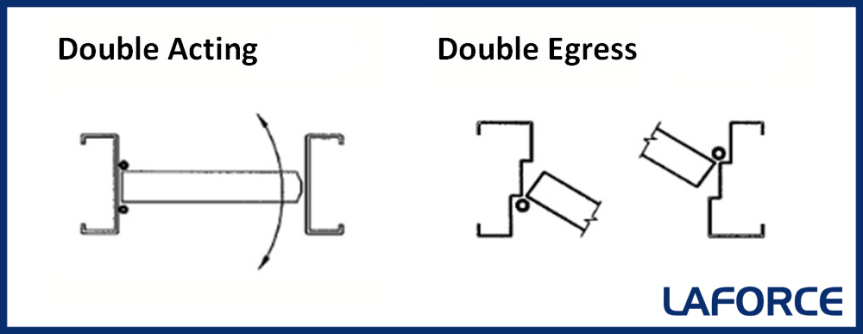How can you tell if a double door is a “double egress” or “double acting?” Read on to discover the differences in application and purpose, and contact LaForce with any additional questions! We also encourage you to save our Door, Frame, and Hardware Glossary for handy reference.

Double Acting Doors
Definition:
A double acting door, also known as a double swinging door or impact traffic door, is a single door or a pair of doors in which the door(s) is able to swing in both directions.
Purpose:
These doors are a cost-effective solution for fast and efficient two-way movement through an opening where a visual and/or sound barrier is necessary to separate two areas.
Frame/Hardware Application:
The door is hung on double acting hinges, or center hung pivots in a “cased open” frame (i.e. no integral stops) which allows the door to swing freely in both directions.
Areas of Use:
Shipping/receiving areas, restaurant kitchens, supermarkets, grocery stores, warehouses, storage facilities, etc.
Notes:
Common add-on hardware for this type of opening application includes bumper strips, spring bumpers, impact/base plates, and jamb guards. This extra hardware can help prevent damage to the high traffic doors that are often knocked and bumped.
Double Egress Doors
Definition:
This type of application is always a pair of doors in which each leaf can only swing in the opposite direction.
Purpose:
These doors are used to control corridor traffic by providing quick, but safe exit and entry into an area; because the traffic on the opposite side of the door does not collide with the oncoming traffic.
Frame/Hardware Application:
The doors are often given hardware that only allows operation from the push side which helps control the traffic flow. A special profile frame is necessary to allow the doors to swing in the opposite direction.
Areas of Use:
In corridors, typically in hospitals, schools, clinics, nursing homes, etc.



Follow Us